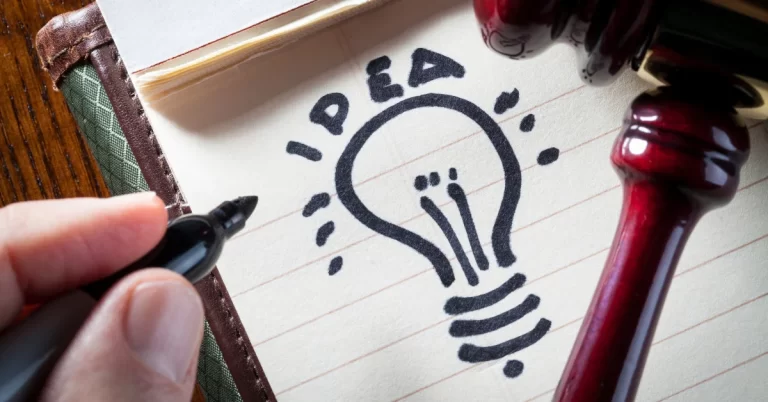What Law Taught Me About Engineering (and Vice Versa)
I used to think of engineering and law as opposing forces in the universe—like matter and antimatter, cats and cucumbers, or tabs and spaces in code formatting debates.
Engineering felt dynamic: build fast, iterate quickly, create boldly, apologize later (via patch releases).
Law seemed static: move cautiously, consider precedent, anticipate challenges, document extensively.
One built the future. The other preserved the past. One sprinted ahead. The other maintained careful balance.
Then I began working in both worlds simultaneously—and realized that the boundary between them isn’t an impenetrable wall. It’s more like a window that offers different perspectives on the same landscape. And what you see from each side fundamentally transforms how you understand the whole.
Law Taught Me: Details Aren’t Just for Debugging
As an engineer, I certainly cared about details. Syntax matters. Edge cases break systems. Exception handling prevents 3 AM emergency calls. I understood the importance of getting the little things right.
But patent law elevated that attention to detail into something approaching an art form.
In engineering, a misplaced semicolon causes an immediate compiler error. In patent law, a misplaced word might silently undermine protection for years before anyone notices—until the moment it matters most. One ambiguous term can transform a straightforward office action into years of litigation. One overly narrow phrase in a claim can render a patent effectively worthless despite appearing perfectly valid on paper.
Engineering taught me how to build something that works. Law taught me how to define and defend it with precision that holds under intense scrutiny.
Now, when I design a system or write code, I don’t just ask, “Does this function correctly?” I ask, “Could I explain why I made these specific choices if challenged? Would this architecture and these design decisions stand up to rigorous examination? Have I documented my reasoning clearly enough that someone else could understand and defend it?”
That shift doesn’t just change what I build—it transforms how I think about building it.
Engineering Taught Me: Start With the Problem, Not the Rules
Legal work often begins with rules and constraints: statutes that define boundaries, case law that establishes precedent, USPTO guidelines that dictate procedure. The starting point is usually “What does the system allow?” rather than “What are we trying to accomplish?”
But engineering conditioned me to approach challenges differently:
Start with the problem itself—its contours, its context, its human impact—and then work your way toward a solution, even when the path forward isn’t immediately obvious.
In research labs, I spent months trying to correct motion artifacts in PET scans. There was no instruction manual, no precedent to follow. Just mathematical principles, trial-and-error experiments, and a growing collection of failed approaches that gradually pointed toward something that might work.
That same problem-first mindset now serves me when navigating legal ambiguity—especially in areas where technology is evolving faster than legal frameworks can adapt. When dealing with AI-generated inventions or open-source licensing questions or software method patents, there often isn’t clear precedent to follow.
Engineering gave me the confidence to operate in uncertain spaces. To prototype solutions. To iterate on approaches. To say, “This path isn’t working; let’s try something fundamentally different” without feeling like I’ve failed.
Law Taught Me to Think About Consequences in Deeper Time
When you’re writing code, the consequences typically feel immediate and correctable:
You push a change. The build breaks. The logs tell you why. You fix it. The cycle repeats.
In law, the consequences operate on a completely different timeline—they’re often delayed by years or even decades, but far more permanent when they arrive.
The language you craft in a patent application might not be scrutinized until years later, during litigation or licensing negotiations. By then, your word choices and definitional decisions carry weight far beyond what you might have imagined when drafting them. The protection you secure (or fail to secure) today might determine a company’s fate long after you’ve moved on to other projects.
This awareness fundamentally changed how I think about future users and stakeholders—whether they’re product users interacting with a system I’ve built or legal entities interpreting something I’ve written.
It taught me to build and write not just for functionality today, but for interpretability and defensibility tomorrow.
Engineering Taught Me How to Learn Anything—Fast
One thing engineers rarely advertise about our profession: most of us spend a significant portion of our days Googling solutions to problems we’ve never encountered before.
Engineering doesn’t just teach you specific technical skills. It teaches you how to learn—how to rapidly absorb new frameworks, how to reverse-engineer functionality from limited documentation, how to read technical specifications like a detective piecing together clues.
This meta-skill transferred seamlessly into legal work.
I didn’t go to law school (at least not yet), but I had to quickly develop legal reasoning skills. I needed to read case law and understand its implications, parse dense statutory language, interpret examiner rejections, and craft effective responses—all without the structured foundation that formal legal education provides.
Engineering didn’t just teach me how systems work—it taught me how to teach myself new systems, repeatedly, under time pressure. That ability to rapidly acquire new knowledge domains has been perhaps the most valuable skill I brought from one field to the other.
And Both Taught Me to Care About the Human Impact
Whether you’re designing an AI model that influences medical decisions or drafting a patent application that protects someone’s life’s work, you’re not just manipulating code or words. You’re affecting real people’s lives:
- A surgeon relying on visualization software during a critical procedure
- A founder whose entire company hinges on the intellectual property you’re helping protect
- A researcher trying to ensure that years of dedicated work translates into something tangible and recognized
Law taught me to protect what matters. Engineering taught me to build what’s needed.
But both disciplines, at their best, taught me to care deeply about the human implications of technical and legal decisions. To listen carefully to the problems people are actually trying to solve. To approach the work with empathy alongside technical precision.
Because innovation isn’t just an output or a filing. It’s a responsibility to the people who will be affected by what we build and how we protect it.
The View From Both Sides
The longer I work in both worlds, the less I want to choose between them.
I want to bring legal rigor and foresight to technical design decisions. I want to bring technical fluency and innovation mindset to legal protection strategies.
And above all, I want to keep asking the questions that matter in both domains: What needs to be built? What deserves to be protected? And how can I contribute to both with integrity and purpose?
Because in the right hands, law and engineering aren’t opposing forces. They’re complementary perspectives that, when integrated thoughtfully, create something more valuable than either could achieve alone.






